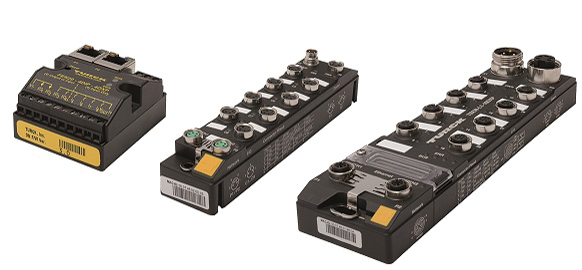Simplifying Fieldbus Technology
The Backplane Ethernet Extension Protocol, Beep for short, was developed by Turck Banner to simplify fieldbus technology even further. With this solution up to 33 I/O modules may be connected in a network using a single IP address
di Noemi Sala
Turck Banner Italia, a joint venture based in Italy between Hans Turck (German manufacturer of inductive and capacitive proximity sensors, connectors, cables, bus systems and RFID systems) and US-based Banner Engineering (manufacturer of photocells, ultrasound sensors, optical products for security, wireless and vision systems) introduces an innovation launched recently to simplify fieldbus technology. The “one device-three protocols” technology had already been developed, whereby Turck Banner’s I/O modules can operate in Profinet, Ethernet/IP e Modbus TCP networks, reducing the number of devices which users have to keep in stock. Now we are dealing with the latest innovation in the industry, Beep, an acronym which stands for “Backplane Ethernet Extension Protocol”: this allows the connection of as many as 33 I/O modules in a network by means of a single IP address.
The main advantages for users employing this device
Beep enables up to 33 block-transfer I/O modules and up to 480 bytes of process data to be combined as Ethernet subnet. This type of subnet requires a single IP address and communicates using a single connection with the controller, irrespective of whether the network is a Profinet, Ethernet/IP or Modbus TCP net.
In this type of Beep network, a module acts as master while a maximum of 32 additional modules act as slaves. Users can therefore count on a double advantage. First of all, they do not need to purchase special gateways with proprietary wiring in order to establish subnets and reduce IP addresses, because in every I/O block the module may be sued as a Beep slave or master. Secondly, by means of the reduction of IP addresses, the user may create high density I7O networks, connecting them with low-cos controllers by means of a lower number of supported connections.
Thanks to the integrated web server configuration is easier
Beep works with all standard Ethernet components. Besides, the configuration could not be easier thanks to the integrated web server. The user defines the first device on the line as Beep master, and the others are automatically slaves. In this case the master saves all the parameters of the configuration of the device. Should a slave be replaced following a failure or any other reason, replacement may occur with a simple drop-in. This does not only reduce times but also associated costs. The newly inserted slave is detected automatically by the Beep master and equipped with the necessary parameters.
No new manual configuration is needed. The Beep master always has a static IP address, while the Beep slaves are not attributed any IP address. Beep networks may also be activated in sequence along a line.
They are configured following the same principle: Master – Slave – … – Master – Slave. It is also possible without any difficulty to carry out a mixed operation made up of Beep networks and devices by other manufacturers. l

